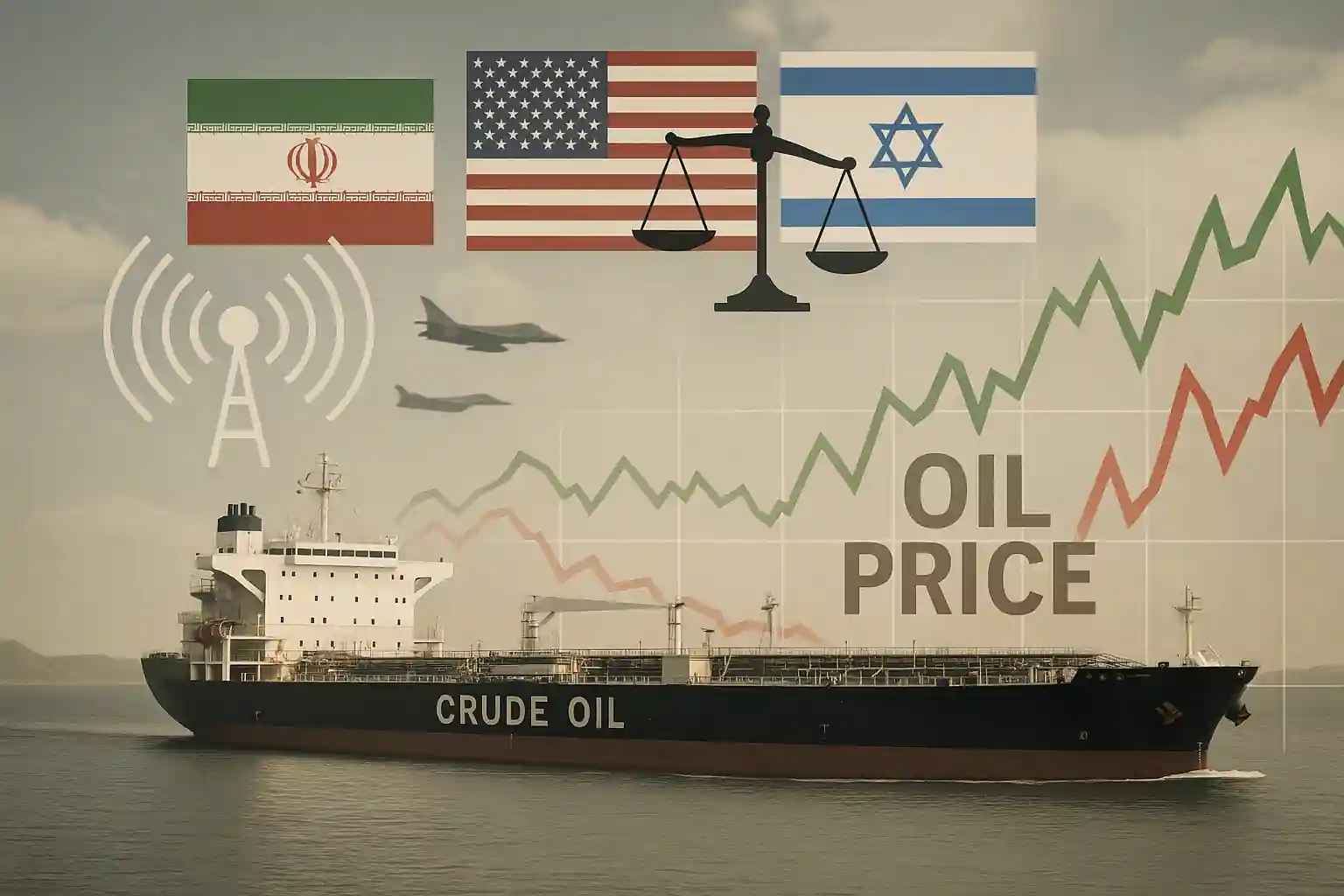Oil Prices Mixed Amid Geopolitical Tensions
Oil and gasoline prices were mixed today. Gasoline hit a 10-month high, while crude oil struggled for direction. A weaker U.S. dollar offered support to oil markets. At the same time, rising fears over a possible Israel-Iran war kept oil traders alert.
Bloomberg reported that U.S. officials are preparing for a potential strike on Iran. Such developments tend to push oil prices higher due to supply risk.
U.S. Diplomacy Efforts Weigh on Oil Market
Despite war concerns, oil lost momentum after President Trump signaled a diplomatic pause. He announced a two-week delay before deciding on a military strike. Iran also expressed willingness to negotiate limits on uranium enrichment, according to Reuters.
This shift to diplomacy calmed immediate fears of oil supply disruptions. The Strait of Hormuz, vital for 20% of global oil traffic, remains open for now.
Navigational Jamming Raises Oil Supply Concerns
Though oil flows through the Strait of Hormuz continue, signal jamming near Bandar Abbas disrupted over 1,000 vessels daily. A recent tanker collision heightened risk perceptions in the shipping sector, adding a bullish undertone to oil price sentiment.
Tariff Fears Continue to Pressure Oil Prices
Tariff concerns continue to drag on oil. President Trump plans to notify U.S. trade partners of new tariffs before July 9. Traders worry that an escalation could harm global growth and weaken oil demand.
Tanker Storage Data Shows Bullish Signal
Oil found some support after Vortexa reported a 7.2% weekly decline in stored crude. As of June 13, stationary tanker oil volumes dropped to 73.97 million barrels. Reduced storage often signals stronger demand, which can drive oil prices higher.
OPEC+ Output Rise Sparks Oversupply Fears
Oversupply concerns returned after OPEC+ increased output by 411,000 bpd for July. This follows a similar hike in June. Saudi Arabia may continue such increases to pressure non-compliant producers like Iraq and Kazakhstan.
OPEC+ is now delaying the full restoration of 2.2 million bpd of production until September 2026. In May, OPEC output rose by 200,000 bpd to 27.54 million bpd.
EIA Data Offers Mixed Outlook for Oil Prices
The latest EIA report revealed a -10.2% drop in U.S. oil inventories below the five-year average. Gasoline and distillate inventories also remained below seasonal norms. Crude production held steady at 13.431 million bpd, just below the December 2022 peak.
This data supports oil prices in the short term, though long-term impacts remain tied to global political developments.
U.S. Rig Count Declines to Multi-Year Low
Baker Hughes reported that active U.S. oil rigs fell to 439, the lowest level in nearly four years. This marks a 30% drop from the December 2022 peak. Fewer rigs mean future oil output growth may slow, potentially supporting oil prices if demand stays strong.




